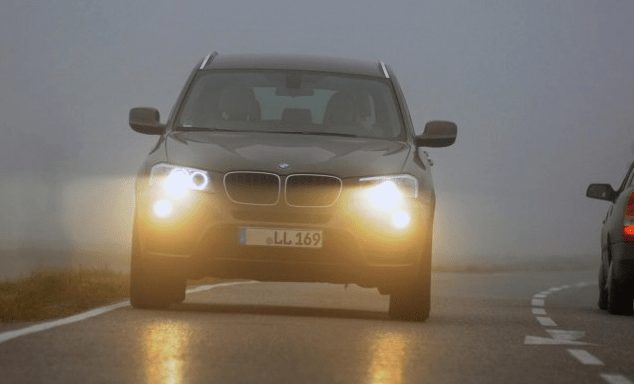
When to turn on the fog lights
Fog often limits visibility to less than 100 meters, and experts prescribe in such cases to limit the speed to 60 km / h. However, many drivers feel insecure while driving and react in different ways. While some press the brake pedal, others continue to move almost unhindered through the fog.
Drivers' reactions are as different as opinions about when and what lights to use when driving in fog. When, for example, can the front and rear fog lights be turned on and do daytime running lights help? Experts from TÜV SÜD in Germany will provide useful advice on the safest road travel.

Often the causes of an accident in fog are the same: too short distance, too high a speed, overestimation of abilities, improper use of light. Similar accidents occur not only on highways, but also on intercity roads, even in urban environments.
Most often, fogs are formed near rivers and water bodies, as well as in lowlands. Therefore, drivers should take into account the possibility of a sharp change in weather conditions when driving in such places.
First of all, in case of limited visibility, it is necessary to maintain a greater distance from other vehicles on the road, change speed smoothly and turn on the fog lights, and, if necessary, the rear fog light. Under no circumstances should we brake hard as this endangers the vehicles behind us.

According to the requirements of the Traffic Law, the rear fog lamp can be switched on when the visibility is less than 50 meters. In such cases, the speed should also be reduced to 50 km / h. The ban on the use of the rear fog lamp when visibility is more than 50 meters is not accidental. It glows 30 times brighter than the rear sensors and dazzles the rear-wheel drive in clear weather. Pegs on the side of the road (where they are), located at a distance of 50 m from each other, serve as a guide when driving in fog.
The front fog lamps can be turned on earlier and in less severe weather conditions - according to the law "Auxiliary fog lamps may only be used when visibility is significantly reduced due to fog, snow, rain or other similar conditions." They illuminate the low road directly in front of the vehicle, as well as the wide perimeter on the side, including the curbs. They help with limited visibility, but in clear weather, their use can result in a fine.

In case of fog, snow or rain, you should turn on the low beam headlights - this improves visibility not only for you, but also for other drivers on the road. In these cases, daytime running lights are not enough because the rear sensors are not included.
Using a high beam in fog in most cases is not only useless, but also harmful, since the water jet in the fog reflects strongly directed light. This further reduces visibility and makes it difficult for the driver to navigate. Anti-fogging is aided by the inclusion of wipers, which wash a thin layer of moisture from the windshield, further impairing visibility.

